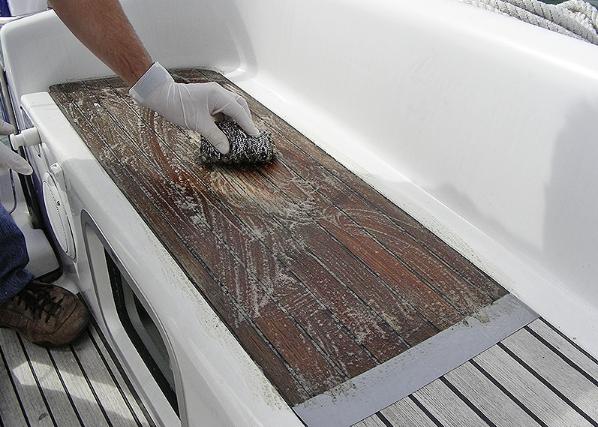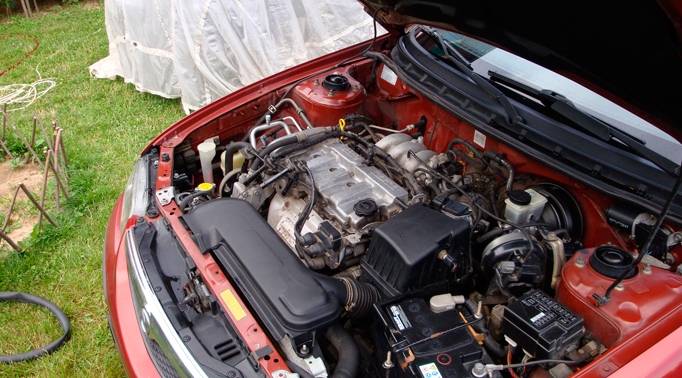Maintaining a boat is not just about scrubbing the deck with a brush and a little water. It must be admitted that, after going out to sea, a certain amount of courage is necessary to arm yourself with a hose and a brush. However, by applying the right gestures, it is possible to save time and efficiency.
Exterior cleaning of the boat
The rule is simple: start with the most aggressive products and end with the least aggressive. In concrete terms, we first use a yellow remover, then we end up with a deck shampoo.

For example, it is necessary to deal first with the wooden fiddles which will, during cleaning, evacuate their black marks on the deck after having been brushed and rinsed, then finish with the stanchions or the stainless steel pulpits.
These can even be treated after washing the deck, to avoid any splashes of water that would leave marks and reduce the effort of proper polishing to nothing. This is why, for this specific position, it is preferable to use cleaning products formulated with a paste or gel.
Finally, it is necessary to clean from bow to stern, paying particular attention to the deck hatches and other overhead portholes, especially if they are Plexiglas, to avoid leaving traces of water which, as they dry, would leave streaks visible in the sun. On the weather side, it is possible to work in all weathers, except for a few specific positions, such as the treatment of teak which must be done dry.

Interior cleaning of the boat
As with exterior cleaning, interior fittings must be completed by the place where you leave. These are often the downhill steps. We therefore logically start from the forward cabin and end with the saloon.
The partitions and the upper parts must be treated as a priority, then it will be the turn of the bottoms, which must not be forgotten, to finish with the floor where the traditional mop will be finished. Compliance with such an order will necessarily benefit the owner.
And even if an individual does not have the same requirements as a cleaning professional, he can take advantage of the time saved to sail, enjoy his boat, etc.
Which is nothing out of the ordinary. Good practice means doing things in the right order. They also save time.
Among the tips of the professional, we can mention products with a dense foam, which anchors well on the support, without flowing, and works almost alone. Hence compliance with the dosages recommended by the manufacturer, knowing that eco-designed products make it possible to be more tolerant with respect to this dosage.
Finally, it may happen that traces do not leave (like mold on mattress covers). These can be erased with chlorine, for example. But you have to be careful not to alter the support and know how to stop before.

Equipment
Professionals use deck brushes of different hardnesses (hard, medium and soft), but also joint brushes (also of different hardnesses), whose smaller head will remove dirt in the corners.
Added to this are sponges, and those also called “magic sponges” for upholstery, fabrics or linings, which are more fragile and require precautions. Finally, the essential chamois leather will wipe away the traces of rinsing.


